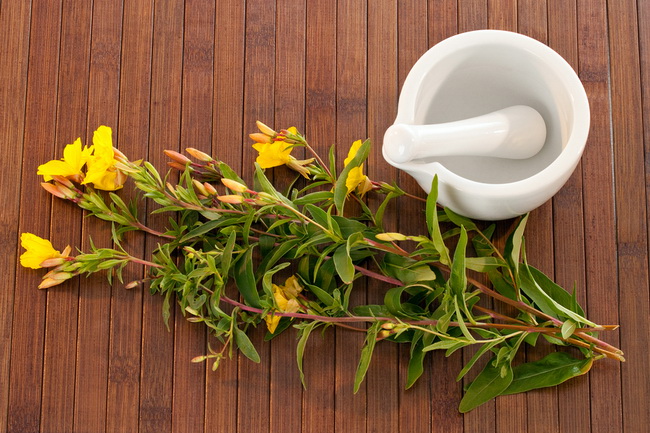- Make It Yourself Lavender Heart-Shaped Bath Bombs!
- 20 Things You Never Knew About “Down There”
- 12 Best Foods For Those Suffering From Arthritis Pain
- 12 Personal Hygiene Mistakes Almost Everyone Makes (Mom Never Told You About #4!)
- 15 Medicinal Plants And Herbs From The Cherokee People
- 12 Mind-Blowing Benefits Of Drinking Coconut Water During Pregnancy
- 12 Outstanding Winter Foods That Won’t Fatten You Up Like A Christmas Turkey
Best 10 Herbs for the Relief of Menopause Symptoms

Photo credit: bigstock.com
7. Alfalfa
This herb is so rich in minerals and nutrients that it is sometimes called the father of all plants. It has roots that go as deep as 30 feet, so it gets nutrients and minerals deep in the earth that most other plants never even get close to absorbing. Some women claim that it can really help with menopause symptoms, especially mood swings, although there are few scientific studies to support these claims.
8. Evening Primrose
This is another highly effective herb that is native to North America. Evening primrose (oenothera biennis) seeds are rich in GLA (gamma linolenic acid), which is an essential fatty acid. This plant has been used since the 1930’s as a treatment for skin conditions such as allergic reactions and eczema, but it’s been used most recently to help inflammatory conditions, diabetes, even in stopping certain types of cancer. The oils from this plants seeds are said to relieve breast pain, mood swings, PMS, and night sweats. Studies show that this supplement is very effective on other types of menopause symptoms as well, including hot flashes and headaches.
9. Valerian Root
Valerian has been used for hundreds of years for many different purposes. Native to Europe and Asia, the flowers were once processed for perfume in the 16th century and have a long history of being used for body aches, convulsions, headaches, migraines, and insomnia. Scientific research shows that the root of this plant has effects on the GABA neurotransmitter activity in the brain. A 1989 study shows that valerian root has very similar effects on GABA receptors in the brain as benzodiazepine drugs do. Valerian root has a history of relieving hot flashes, insomnia, anxiety attacks, and muscle tension.
SEE ALSO: Top 5 Menopause Issues and How to Fix Them
10. Chaste berry
Chaste berry, sometimes called Monk’s Pepper, is native to the Mediterranean and Central Asia. It has been used historically to increase milk production and relieve menstrual problems. Women today take it as a natural alternative to hormone replacement therapy. Studies show that chaste berry can help stop PMS, breast pain, and infertility. Because it has effects on hormone levels, women who have had breast cancer or have a family history of breast cancer, should not take chaste berry.
You can also try simple lifestyle changes that are known to help many women with their menopause symptoms, such as getting some light yet regular exercise and avoiding caffeine, nicotine, and alcohol. Many women say that yoga and meditation are extremely helpful as well.
Always consult your doctor if you have any questions about taking herbal supplements or if you are already taking prescription medications.
Sources:
M. Resnick, M. A. Espeland, S. A. Jaramillo, C. Hirsch, M. L. Stefanick, A. M. Murray, J. Ockene, C. Davatzikos. Postmenopausal hormone therapy and regional brain volumes: The WHIMS-MRI Study. For the Women’s Health Initiative Memory Study. Neurology January 13 2009, Volume 72, Issue 2, Pp 135-142.
Hay-Smith EJC, Dumoulin C. Pelvic floor muscle training versus no treatment, or inactive control treatments, for urinary incontinence in women (Review). The Cochrane Database of Systematic Reviews 2006, Issue 1.
Mee-Ra Rhyu, Jian Lu, Donna E. Webster, Daniel S. Fabricant, Norman R. Farnsworth and Z. Jim Wang. Black cohosh (Actaea racemosa, Cimicifuga racemosa) behaves as a mixed competitive ligand and partial agonist at the human mu opiate receptor. J. Agric. Food Chem. 2006 December 27; 54(26): 9852–9857.
































